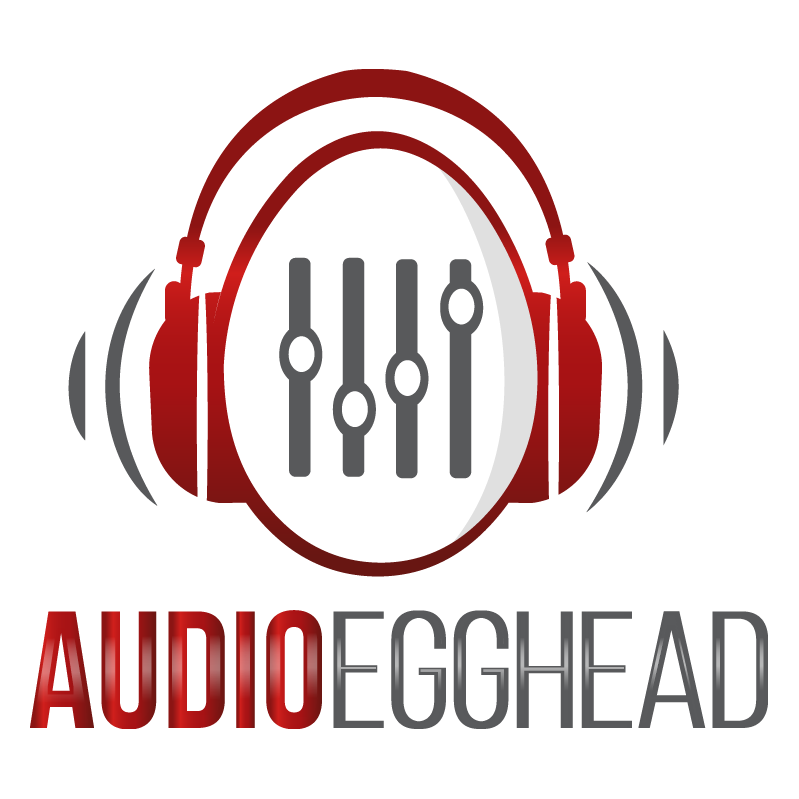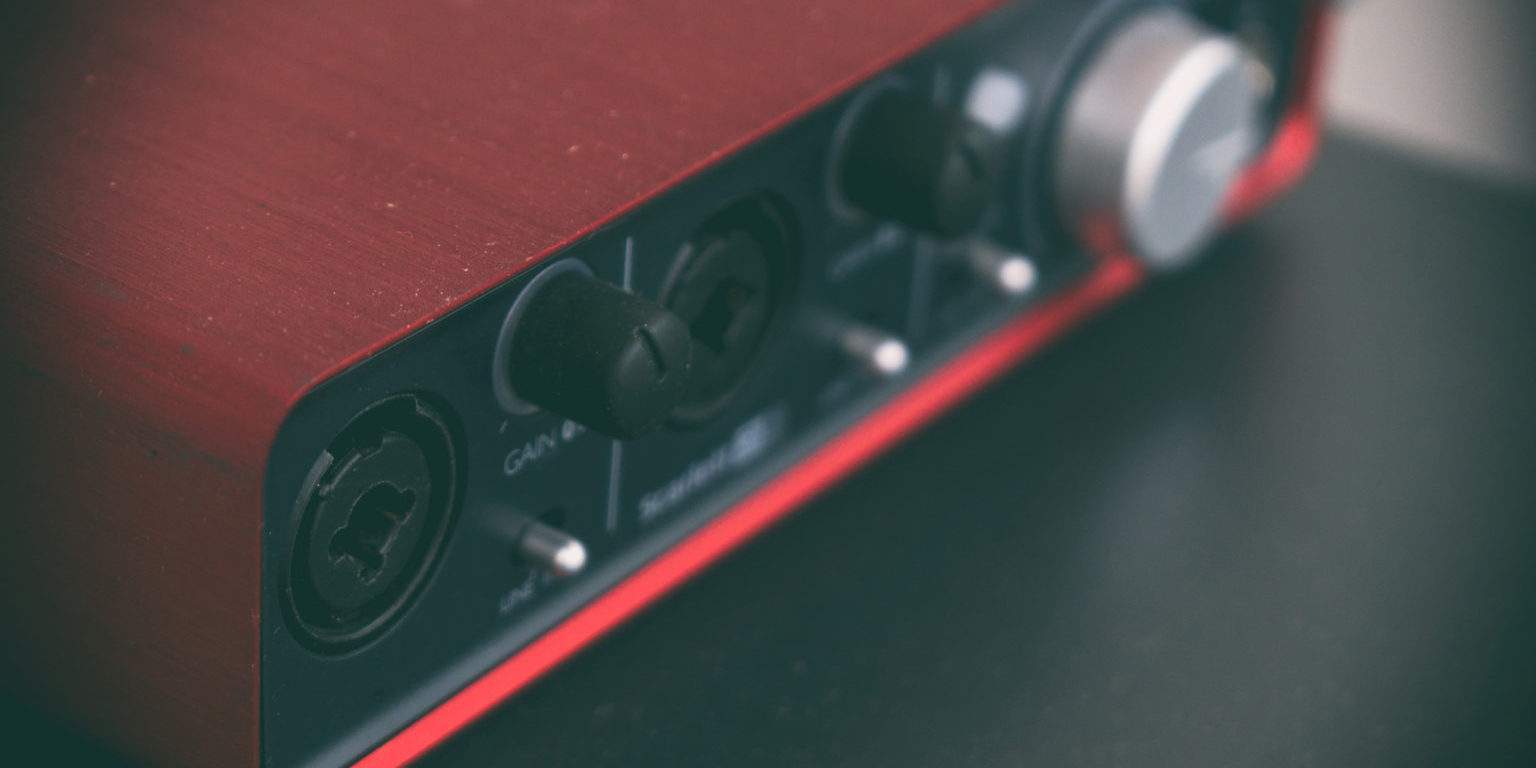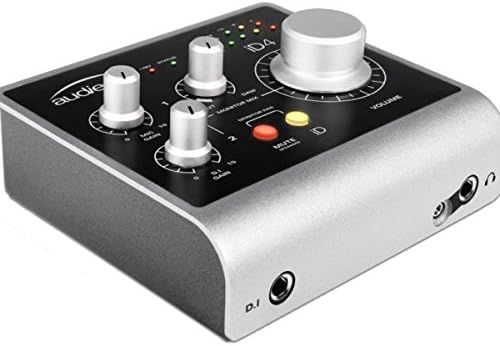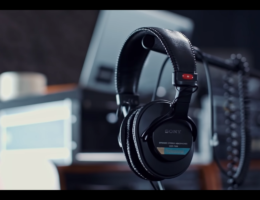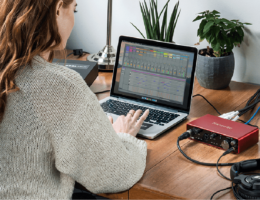Whether your a recording artist, producer, podcaster, YouTuber, or ANYTHING involving a microphone or instrument, you will need a USB Interface. Luckily you have many options to choose from—but choosing is never easy. What is the best USB Audio Interface for you? From Apogee to Native Instruments and Presonus Studio, the options are endless.
It all depends on how many inputs and outputs you need—but on this list, we’ll cover something for everyone.
A USB audio interface acts as a middleman between your computer and your sound equipment—essentially, it’s an external soundcard.
When most individuals discover a passion for the entertainment and arts fields (especially nowadays in our increasingly online world), they often spend all their money on high-tech expensive equipment brands and items like microphones or speakers. But you won’t need to fork over an arm and a leg to find a good audio interface.
Best USB Audio Interface: Frequently Asked Questions
- What is a USB Audio Interface?
- Why Should I use an Audio Interface?
- What Key Features do the Best Audio Interfaces Have?
1. What is a USB Audio Interface?
When paired with your other equipment such as instruments, speakers, or microphones, the audio interface unit will help act as a tool to allow you to better record and edit audio on your computer. It’s helpful to think of the audio interface simply as a middleman connecting your devices and equipment to your computer.
What it Does
Did you know that typical audio equipment produces analog signals and that your computer is far better at reading digital ones? The interface will coherently convert those analog signals into ones your computer can easily read. From there, the digital signals are transferred to your computer via a USB connection, and from there, sounding crisp and clear through the home studio monitors.
Just as they convert analog signals to digital ones, the interface can work in reverse as well. A standard audio interface will typically have line-level analog inputs/outputs, and some models even have multiple microphone amplifiers so you can mic up the whole band.
Depending on how steep your price range is, you may even come across a few that have digital inputs/outputs to help with the opposite part of the process!
2. Why Should I Use an Audio Interface?
The easiest and most obvious answer to this is that the use of the best USB audio interface will noticeably change your sound quality for the better compared to using your built-in soundcard.
The main reason for this is because these interfaces possess the ability to easily convert your digital signals into analog ones or vice versa with impressive clarity, complexity, and minimal error (far less error than what the typical computer soundcard is capable of) and extremely low latency and effective latency monitoring for real-time live music production capabilities.
Your Stock Sound Card
Think about the sound card on your current computer. Unless you’ve already spent a pretty penny for more than just the stock one it came with, you’re likely not paying it much attention. There are a couple of issues with your built-in soundcard:
- Usually only one output, rarely even an input (aside from a built-in mic)
- Interference from the other moving parts of your computer
- They’re really just meant for casual listening, not professional use
How an Interface Works Differently
The singular, two-dimensional sound that comes with consumer-grade stereo line-level outputs can be vastly improved with more even amplification and added complexity, both of which you’ll find in an audio interface.
With an interface, you’ll also reap the benefits of having multiple inputs and outputs. This can help you put together music much faster; you’ll have room for your electric guitar, voice mic inputs, midi controller, and any other instrumental parts you may need in your home studio.
3. What Key Features do the Best Audio Interfaces Have?
Microphone Preamps (48v Phantom Power)
You’ll first want to look for an interface that has microphone pre-amplifiers (48v phantom power). The purpose of these pre-amplifiers is to power condenser microphones. This is the magic behind crisp, clear, professional-sounding recordings with your condenser mic.
Inputs and Outputs
There are a few different input types, and you’ll have to decide how many input/output ports you’ll need on your interface.
The range you’ll have to choose from can be vast; minimal interfaces will only have one mic pre-amplifier, one line input for instruments, and usually a minimum of 2 outputs for speakers (left and right) and usually at least one headphone output.
Some of the most advanced models may have anywhere from 4-10 interfaces with multiple inputs. There will also be a variety of inputs, such as DI, MIDI, or optical.
How We Reviewed the Interfaces
We reviewed these items based on the following parameters: their respective unique features that make them stand out from the rest, their pros and cons, their price on a scale of $, $$, or $$$ relative to the other items on the list, an Amazon link to buy the item, and each item’s warranty.
Overall Price Range of the USB Audio Interfaces on This List
Since prices are always fluctuating, we have decided to detail the price of each item using a scale specific to this list of ten items.
The possibilities are $, $$, or $$$ depending on how pricy the item is compared to the others. For example, the cheapest item on this list will be detailed with only one dollar sign, while the most expensive will have three signs. The prices range from $99 to $700.
What Interfaces We Reviewed
- Focusrite Scarlett 2i2 (2nd Gen) USB Audio Interface
- Tascam US-2×2 USB Audio/MIDI Interface
- Focusrite Clarett 4Pre USB 18-in/8-out USB 2.0Audio Interface
- BEHRINGER U-PhoriaAudio Interface
- Universal Audio Apollo TwinMKIISolo
- Roland Rubix 22 USB Audio Interface
- M-Audio M-Track 8X4M
- Audient iD4 USB 2-in/2-out High-Performance Audio Interface
- Steinberg UR12 USB Audio Interface
- PreSonus AudioBox USB 96 2×2 USB Audio Interface
Focusrite Scarlett 2i2 (3rd Gen) USB Audio Interface
Features
This S/PDIF USB audio interface is a second-generation interface, meaning it’s the new and improved version of its first model.
This particular model gives you the option to connect vis USB-C ports or Thunderbolt ports. There are also older USB 3.0 ports in case you need them for an older computer.
This interface features air-enabled mic preamps that offer impressive clarity and sound quality. There are a total of four on-board preamps, and this model also offers four additional line-in jacks. You’ll count a total of 18 inputs and eight outputs on this interface!
Pros
- 18 inputs and eight outputs
- Comes with Pro Tools
- USB-C and USB 3.0 ports available
- World-class New and improved, second-generation interface
Cons
- Some users claim to hear crackling or popping from time to time in the headphone output
- Inconsistent ability to perform
Price $$
Warranty
This product comes with a two-year limited warranty.
Tascam US-2×2 USB Audio/MIDI Interface
Features
This USB interface has well-built, high-quality mic preamps and 2 quarter-inch line inputs, perfect for recording the microphones and/or instruments of your choice.
The inputs are XLR TRS combo jacks (you can plug in an XLR cable or a 1/4″ jack. Note that the phantom power only works with an XLR connection. The resolution is an impressive 24-bit/96 kHz.
The unit also includes a MIDI in and out, which is becoming less common with modern interfaces, allowing you to connect MIDI devices directly to your interface (and freeing up the USB inputs on your computer).
The interface includes 2 1/4″ outputs for your speakers as well.
Pros
- User-friendly design
- Durable
- Takes up minimal space on a desktop
- Above-average sound specs
Cons
- Limited outputs (only 2)
Price $
Warranty
This product comes with a one-year warranty.
Focusrite Clarett 4Pre USB 18-in/8-out USB 2.0 Audio Interface
Features
This best USB audio interface features a whopping 18 inputs and 8 outputs. The unit has 4 Combo XLR TRS inputs with mic-preamps. These inputs have been expertly designed to avoid unwanted noise and distortion. They also have an “Air” feature, giving your recordings a crisp, warm, analog feel.
Additionally, there are 4 fixed line inputs on the back, next to an SPDIF input (and output).
An ADAT connection allows you to connect another unit for the additional inputs.
Pros
- Easily compatible
- Lots of inputs and outputs
- Room for additional channels
- Great for recording vocals—podcast or music
Cons
- On the higher-priced end of this list
Price $$$
Warranty
This product comes with a free one-year extended warranty.
BEHRINGER U-Phoria Audio Interface
Features
This USB audio interface comes jam-packed with features we feel those who are a bit more experienced and looking for variety in sound will favor.
This model is equipped with four outputs and has MIDI inputs and outputs, so you’ll never run out of plug-in options during a recording session. The preamp and RCA inputs were designed in a well-thought-out and efficient way that ensures you’ll have consistent and clear quality throughout your entire conversion process.
Pros
- Great for professionals or intermediates
- Extremely affordable for the number of inputs/outputs
- Carefully crafted and expertly designed
- The outer shell has excellent durable build-quality, providing excellent longevity
Cons
- The interface is a bit busy with inputs, controls, and lights
Price $$
Warranty
This product comes with a three-year warranty.
Universal Audio Apollo Twin MKII Duo
Features
This USB and thunderbolt audio interface is perfect for the solo singer/songwriter as it has 2 Combo XLR TRS inputs with built-in premium microphone preamps.
These two mic/line preamps make for a simple, user-friendly interface experience.
Along with the purchase of this model, you’ll receive a bundle of additional UAD plugins. There are more hardware emulation options than you may even ever need, such as LA-2A, and 117LN, among others. There are also a few Softube plugins to choose from.
Pros
- Built-in talkback mic
- Thunderbolt connection option
- 24-bit, 192kHz audio conversion
- Premium microphone preamps
- Countless plugins and hardware emulation options
- Simple, user-friendly design
Cons
- On the more expensive end of this list
Price $$$
Warranty
This product comes with a one-year warranty.
Roland Rubix22 USB Audio Interface
Features
This USB audio interface is perhaps one of the smallest you’ll see on this list. Don’t let its size fool you, though. This particular interface packs everything you need into a small, durable build.
If anything, its size is an asset because of its added portability. This model features two mic preamps that were designed with the goal of high definition, low noise in mind.
The depth and complexity you’ll be able to achieve with this powerful little device will amaze you. There are two Combo XLR TRS inputs with built-in mic preamps. There is also a MIDI in and a MIDI out.
There is an output port for headphones and two balanced TRS outputs as well.
Pros
- Plenty of inputs
- Small yet powerful and delivers high quality
- Great depth and complexity of sound can be achieved with this design
Cons
- Limited outputs (only room for 2 speakers)
Price $$
Warranty
There is no warranty information available online for this product.
M-Audio M-Track 8X4M
Features
This best USB audio interface is great for those who like a touch of old-school looks in their equipment (while it still delivers high-quality results, of course). In its appearance, you’ll likely be reminded of a compact music mixer.
Fear not, though, this interface has kept up with the times flawlessly: it comes fully equipped with 4 combined XLR and quarter-inch TRS inputs as well as two instrument input options and two line-level inputs.
A great addition to this package is a bundle of DAWs and other software, including Ableton, Pro Tools, and more.
Pros
- Unique, classic look
- Two instrument inputs and two line-level inputs
- Easily compatible and comes with a collection of plugins
Cons
- Busy control setup—not as easy to use as most interfaces
Price $$
Warranty
This product comes with a one-year warranty.
Audient iD4 USB 2-in/2-out High-Performance Audio Interface
Features
This best USB audio interface is perhaps the best one on this list for beginners. This interface will get you started with the essentials, and without the distracting and intimidating bells and whistles, some of the other models come with.
There is a singular class-A mic preamp as well as one JFET DI (digital interface) input so you can directly plug in your instrument of choice. This model also comes with one quarter-inch headphone jack and an eighth-inch jack.
Pros
- Excellent for beginners
- Bare essentials
- Focused audio quality in the DI and microphone preamp
Cons
- Very limited inputs/outputs
Price $$
Warranty
This product comes with a twelve-month warranty.
Steinberg UR12 USB Audio Interface
Features
This USB audio interface has a smaller design, much like the Roland Rubix 22.
Many users favor the depth and sound clarity they can achieve with this small but powerful interface. Although there is only one mic preamp, it was designed by Yamaha and is classified D-pre class A. There are inverted Darlington circuits that are excellent at amplifying the smoothness of your sound.
This device does have limited inputs and outputs—with 1 XLR input with a mic preamp, and one 1/4″ TRS input, and an unbalanced RCA line output for your speakers.
Pros
- The 2nd most affordable option on this list
- Yamaha design
- Darlington circuits vastly improve the depth and clarity
Cons
- Limited inputs/outputs
Price $
Warranty
This product comes with a one-year warranty.
PreSonus AudioBox USB 96 2×2 USB Audio Interface
Features
This best USB audio interface offers stunning 24-bit/96 kHz audio that will give you studio-quality sound right at home. This model features two mic preamps to give you the ability to record two different tracks simultaneously.
The preamps will consistently boost microphone signals every time to keep noise and distortion as low as possible. Thanks to the high headroom, you’ll be graced with a sound that’s natural, not muffled, and has the desired depth. There are a total of 3 inputs and 4 outputs on this model, although you can only you two inputs and two outputs at once.
Pros
- Two mic preamps on this model
- Smaller, more portable design
- Studio quality sound that’s natural and open
- The most affordable interface on this list
Cons
- Headphone jack is on the back
Price $
Warranty
This product comes with a one-year warranty.
The Verdict
There you have it—10 of the best USB audio interfaces. But which one is my TOP pick?
The Lowest Cost: PreSonus AudioBox USB 96 2×2 USB Audio Interface
 While it has few inputs and outputs, it is the most affordable on this list, and gets the job done!
While it has few inputs and outputs, it is the most affordable on this list, and gets the job done!
Check Price On Amazon
The Most Inputs/Outputs for Your Dollar: BEHRINGER U-Phoria Audio Interface
 The Behringer U-Phoria has the most built-in inputs and outputs at a low cost. Sure, there are other interfaces with more inputs, but at a much higher price.
The Behringer U-Phoria has the most built-in inputs and outputs at a low cost. Sure, there are other interfaces with more inputs, but at a much higher price.
Check Price On Amazon
The Best USB Audio Interface for Podcasters: the Focusrite Clarett
 With 4 inputs with premium preamps, and the “Air,” the Focusrite Clarett interface is MADE for voice—4 of them to be specific. This is a great interface for podcasters and vocal artists alike.
With 4 inputs with premium preamps, and the “Air,” the Focusrite Clarett interface is MADE for voice—4 of them to be specific. This is a great interface for podcasters and vocal artists alike.
Check Price On Amazon
Ol’ Reliable (and My Favorite): The Focusrite Scarlett 2i2
 I’ve always used Scarlett Focusrite products. They’re reliable, easy to use, and I guess I just like the color red?
I’ve always used Scarlett Focusrite products. They’re reliable, easy to use, and I guess I just like the color red?
In all seriousness, I’ve owned a few brands, but Focusrite has yet to fail me. I’ve owned and used a Scarlett 18i8 (used!) every day for 5 years, and have yet to have any trouble with it.
The 2i2 is great for beginners and intermediates, as long as its 2 inputs (with 2 mic preamps) and 2 outputs will suffice. While it’s not the lowest price on the list, it’s just over—but its longevity is worth the extra $70.
Check Price On Amazon
Pro Tip: Keep an Eye Out for Bundles
Many shoppers looking for audio interface equipment are also in the market for music production VWA software such as Pro Tools, Studio One, Ableton Live, or Ableton Live Lite, which are all compatible with Mac or PC and available from Amazon.
When purchasing an interface, keep an out for what software comes with it. Many interfaces are sold with software bundles and lite versions of DAWs.
Some even come with a microphone and headphones—so if you’re in need, keep an out for those bundles as well.
